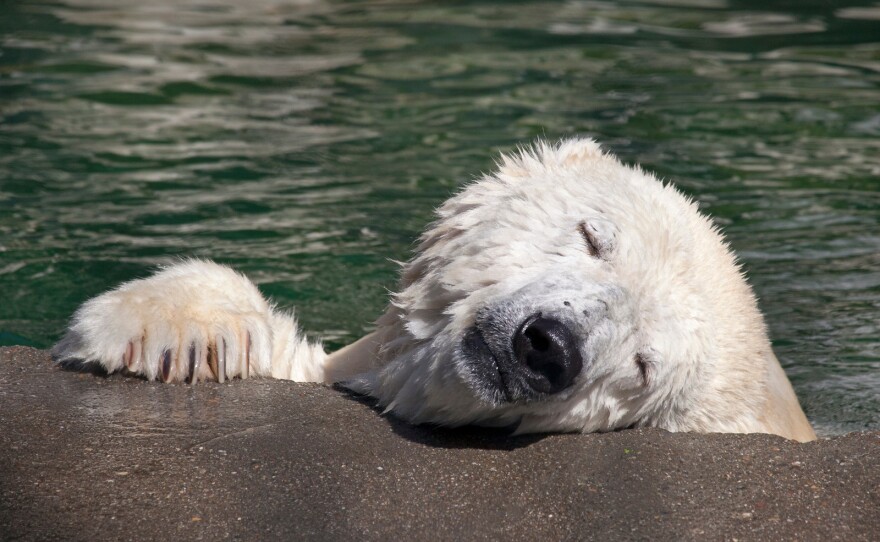For every famous name in animal science — Jane Goodall, Ivan Pavlov, Charles Darwin — there are easily 100 scientists you’ve never heard of, including Gail Hedberg, a retiring senior veterinary technician at San Francisco Zoo. Ninety percent of her job entails working in the zoo’s hospital, but the other ten percent is pretty different. Hedberg wrote the book on hand-rearing baby exotic animals.
She started on the path toward this specific area of expertise in 1982, when a newborn polar bear cub needed human help to survive. Her mother had a poor parenting record and the zoo decided that the cub, Pike, would be better off if she was hand-reared. That means fed from a bottle.
“People tell me I have a gift when it’s to the hand-rearing,” Hedberg says. “You can tell by my voice, it’s a very unique voice.”
Hedberg had a background in hand-rearing from her earlier work at Marine World Africa USA, and it was decided that not only would she be in charge of Pike’s care, she would take her home to Fremont and provide her with the round-the-clock attention that she required in the first months of life.
Hedberg and her husband Kent had to learn how to handle a polar bear cub under unique circumstances. Pike required hourly feedings, pristine living conditions and lots of attention.
“They actually had three incubators, there was one at the zoo, there was one in the van and there was one at home,” he recalls. “So there was always a warm incubator ready to go.”
Pike, now 30, is a real success story. At the time, only five other polar bear cubs had survived hand-rearing in captivity. The lack of science-based information about what to feed young polar bears inspired Hedberg to embark on decades of research into the actual composition of wild-caught polar bear milk. She enlisted the help of Polar Bears International and they sampled and tested milk from free-range polar bears in Norway.
Those findings were published in the journal Zoo Biology, in 2011, and her formula recommendations have become the industry standard for both wild and captive polar bears. There is an increasing need to understand the dietary needs of polar bears as the ice on which they live in the wild melts around them.
Although Hedberg is retiring from the zoo this summer, she’s not retiring from the cause. She says that knowledge often gets lost when experienced staff leave, and her goal is to pass on as much of her expertise as possible to the next generation of exotic animal caretakers. She’s even organized a hand-rearing workshop for next year.
Part of her legacy will be a network to find out who in the world has hand-reared a specific type of marmoset. Or even a polar bear.
Click the audio player above to hear Pike's story.








